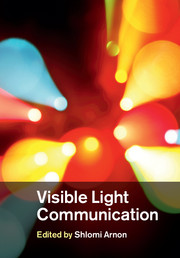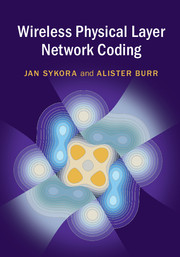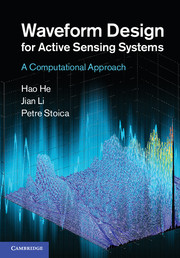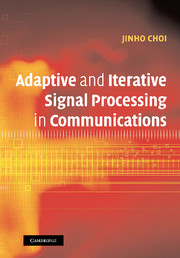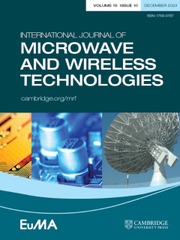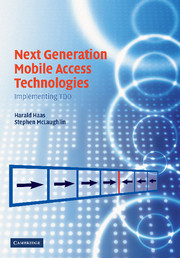Principles of LED Light Communications
Towards Networked Li-Fi
- Authors:
- Svilen Dimitrov, German Aerospace Center (DLR)
- Harald Haas, University of Edinburgh
- Date Published: March 2015
- availability: Available
- format: Hardback
- isbn: 9781107049420
Hardback
Other available formats:
eBook
Looking for an inspection copy?
This title is not currently available on inspection
-
Balancing theoretical analysis and practical advice, this book describes all the underlying principles required to build high performance indoor optical wireless communication (OWC) systems based on visible and infrared light, alongside essential techniques for optimising systems by maximising throughput, reducing hardware complexity and measuring performance effectively. It provides a comprehensive analysis of information rate-, spectral- and power-efficiencies for single and multi-carrier transmission schemes, and a novel analysis of non-linear signal distortion, enabling the use of off-the-shelf LED technology. Other topics covered include cellular network throughput and coverage, static resource partitioning and dynamic interference-aware scheduling, realistic light propagation modelling, OFDM, optical MIMO transmission and nonlinearity modelling. Covering practical techniques for building indoor optical wireless cellular networks supporting multiple users and guidelines for 5G cellular system studies, in addition to physical layer issues, this is an indispensable resource for academic researchers, professional engineers and graduate students working in optical communications.
Read more- Demonstrates the key principles that enable LEDs to transmit wireless data at very high speeds, and delivers design guidelines for building and optimising such OWC systems
- Delivers a framework for optimising multi-carrier signals, taking into consideration the properties of practical off-the-shelf front-end components which maximises the throughput of OWC links
- Explains realistic and comprehensive channel modelling in a cellular OWC network in an aircraft cabin via Monte Carlo ray-tracing, providing a realistic assessment of system performance in a practical multi-user communication set-up
- Evaluates the analysis and performance of a novel low-complexity MIMO transmission scheme, spatial modulation, which reduces hardware complexity and improves transmission rates
Customer reviews
Not yet reviewed
Be the first to review
Review was not posted due to profanity
×Product details
- Date Published: March 2015
- format: Hardback
- isbn: 9781107049420
- length: 224 pages
- dimensions: 249 x 173 x 15 mm
- weight: 0.61kg
- contains: 86 b/w illus. 13 tables
- availability: Available
Table of Contents
1. Introduction
2. Optical wireless communication
3. Front-end nonlinearity
4. Digital modulation schemes
5. Spectral efficiency and information rate
6. MIMO transmission
7. Throughput of cellular networks.
Sorry, this resource is locked
Please register or sign in to request access. If you are having problems accessing these resources please email [email protected]
Register Sign in» Proceed
You are now leaving the Cambridge University Press website. Your eBook purchase and download will be completed by our partner www.ebooks.com. Please see the permission section of the www.ebooks.com catalogue page for details of the print & copy limits on our eBooks.
Continue ×Are you sure you want to delete your account?
This cannot be undone.
Thank you for your feedback which will help us improve our service.
If you requested a response, we will make sure to get back to you shortly.
×

